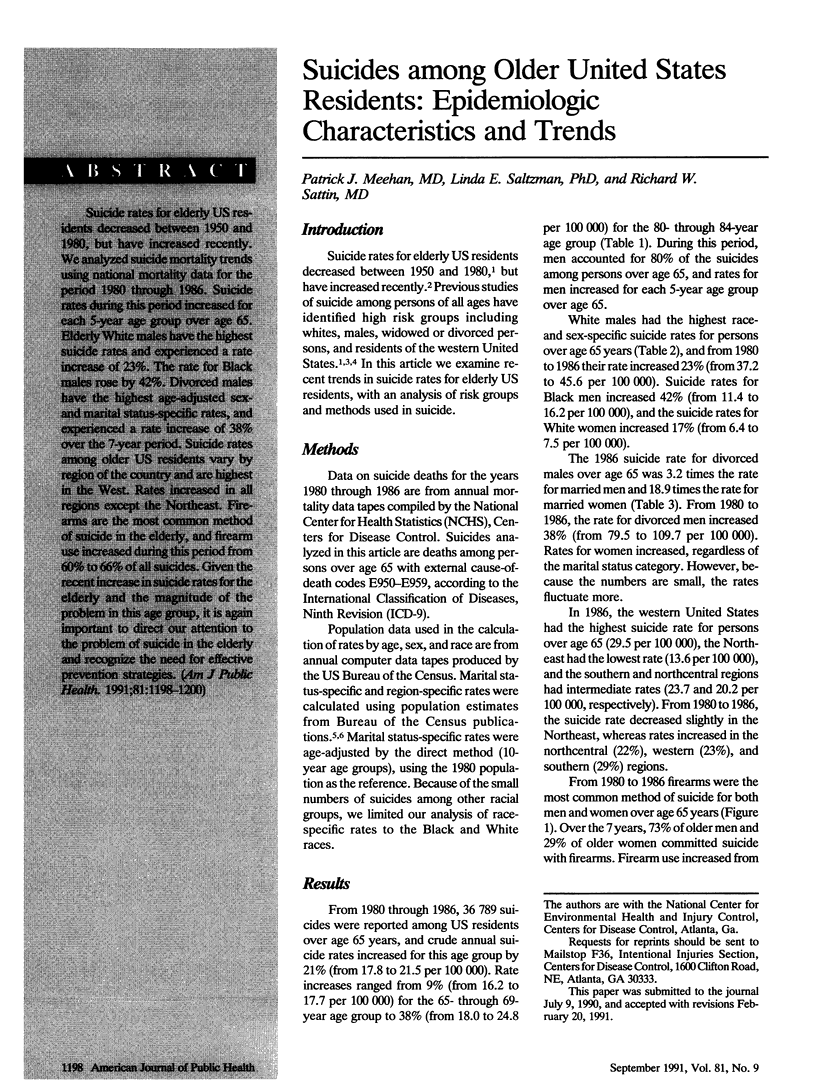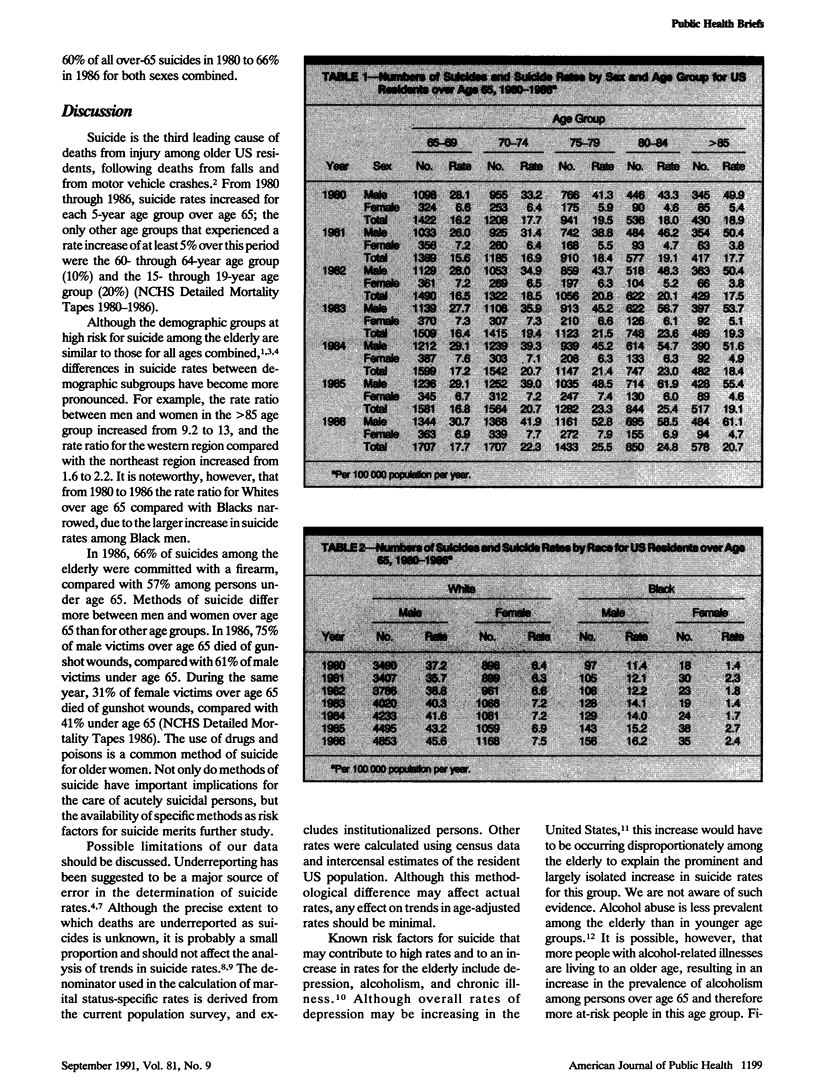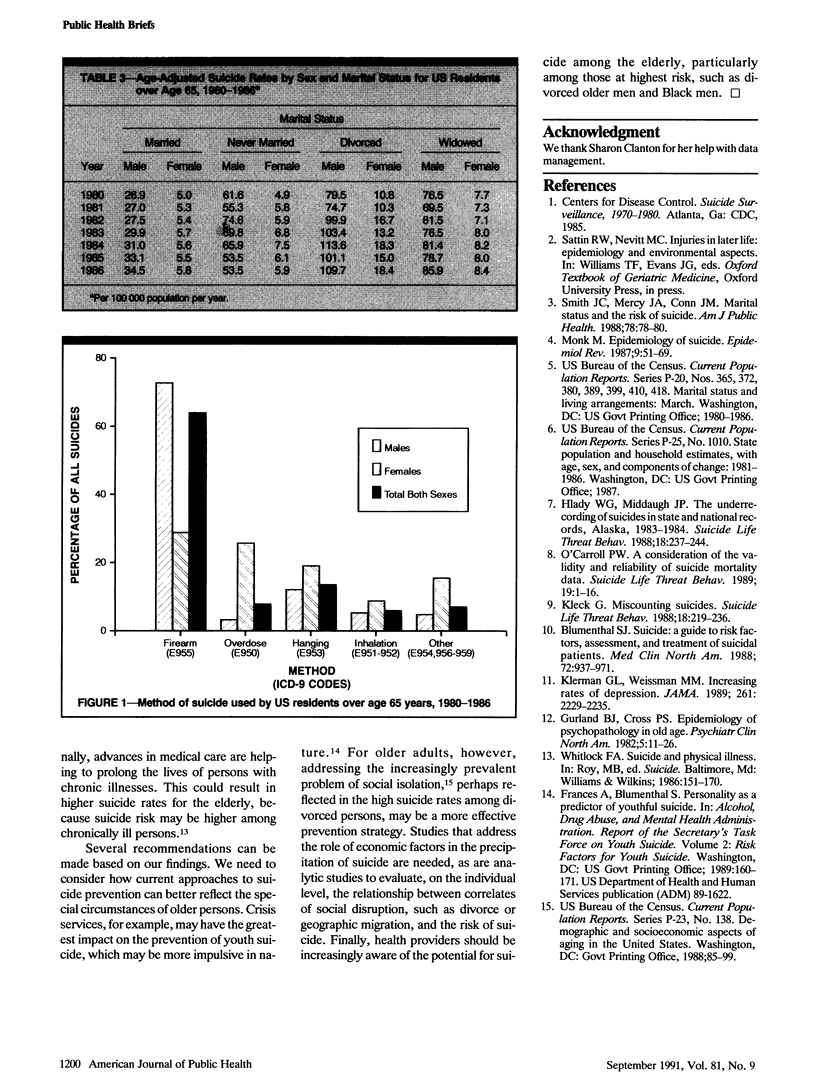Abstract
Suicide rates for elderly US residents decreased between 1950 and 1980, but have increased recently. We analyzed suicide mortality trends using national mortality data for the period 1980 through 1986. Suicide rates during this period increased for each 5-year age group over age 65. Elderly White males have the highest suicide rates and experienced a rate increase of 23%. The rate for Black males rose by 42%. Divorced males have the highest age-adjusted sex- and martial status-specific rates, and experienced a rate increase of 38% over the 7-year period. Suicide rates among older US residents vary by region of the country and are highest in the West. Rates increased in all regions except the Northeast. Fire-arms are the most common method of suicide in the elderly, and firearm use increased during this period from 60% to 66% of all suicides. Given the recent increase in suicide rates for the elderly and the magnitude of the problem in this age group, it is again important to direct our attention to the problem of suicide in the elderly and recognize the need for effective prevention strategies.
Full text
PDF


Selected References
These references are in PubMed. This may not be the complete list of references from this article.
- Blumenthal S. J. Suicide: a guide to risk factors, assessment, and treatment of suicidal patients. Med Clin North Am. 1988 Jul;72(4):937–971. doi: 10.1016/s0025-7125(16)30754-4. [DOI] [PubMed] [Google Scholar]
- Gurland B. J., Cross P. S. Epidemiology of Psychopathology in old age. Some implications for clinical services. Psychiatr Clin North Am. 1982 Apr;5(1):11–26. [PubMed] [Google Scholar]
- Hlady W. G., Middaugh J. P. The underrecording of suicides in state and national records, Alaska, 1983-1984. Suicide Life Threat Behav. 1988 Fall;18(3):237–244. doi: 10.1111/j.1943-278x.1988.tb00159.x. [DOI] [PubMed] [Google Scholar]
- Kleck G. Miscounting suicides. Suicide Life Threat Behav. 1988 Fall;18(3):219–236. doi: 10.1111/j.1943-278x.1988.tb00158.x. [DOI] [PubMed] [Google Scholar]
- Klerman G. L., Weissman M. M. Increasing rates of depression. JAMA. 1989 Apr 21;261(15):2229–2235. [PubMed] [Google Scholar]
- Monk M. Epidemiology of suicide. Epidemiol Rev. 1987;9:51–69. doi: 10.1093/oxfordjournals.epirev.a036308. [DOI] [PubMed] [Google Scholar]
- O'Carroll P. W. A consideration of the validity and reliability of suicide mortality data. Suicide Life Threat Behav. 1989 Spring;19(1):1–16. doi: 10.1111/j.1943-278x.1989.tb00362.x. [DOI] [PubMed] [Google Scholar]
- Smith J. C., Mercy J. A., Conn J. M. Marital status and the risk of suicide. Am J Public Health. 1988 Jan;78(1):78–80. doi: 10.2105/ajph.78.1.78. [DOI] [PMC free article] [PubMed] [Google Scholar]


